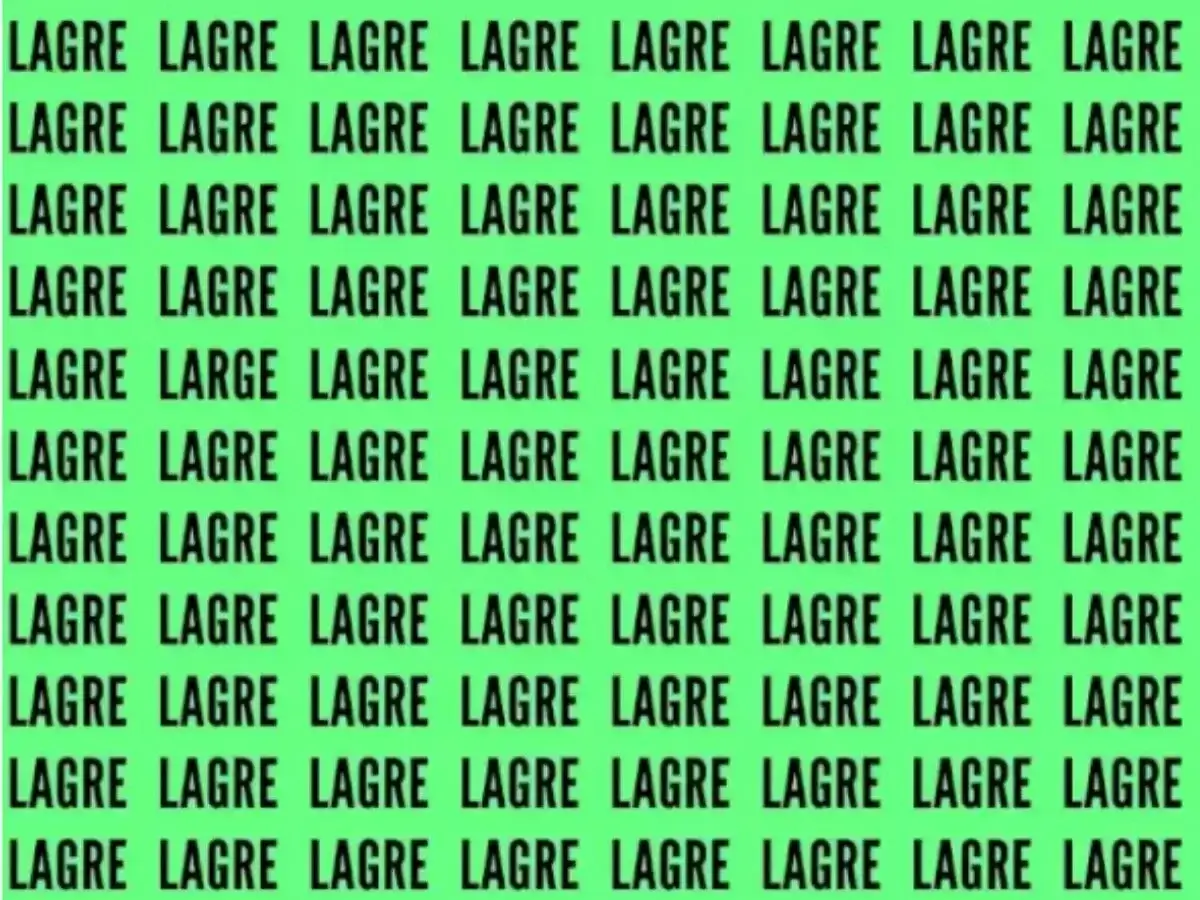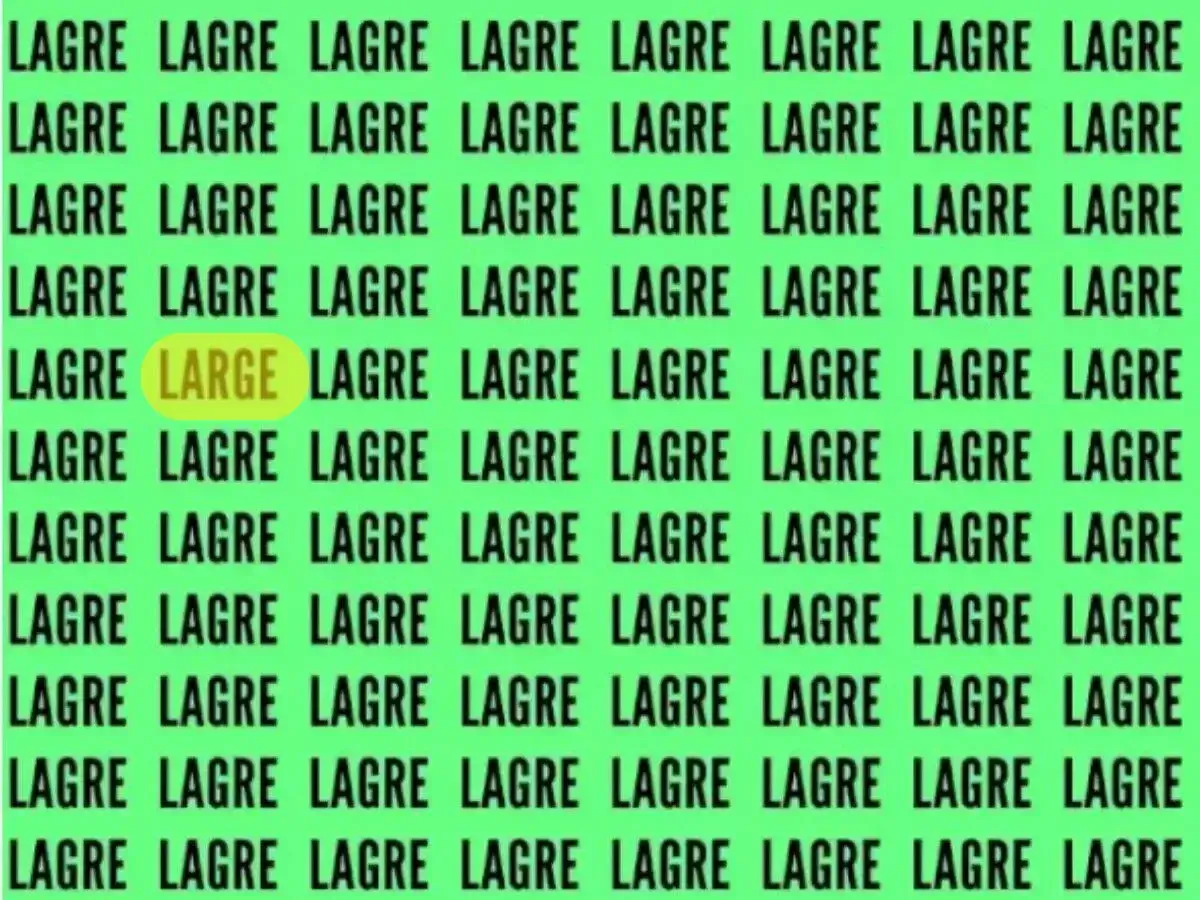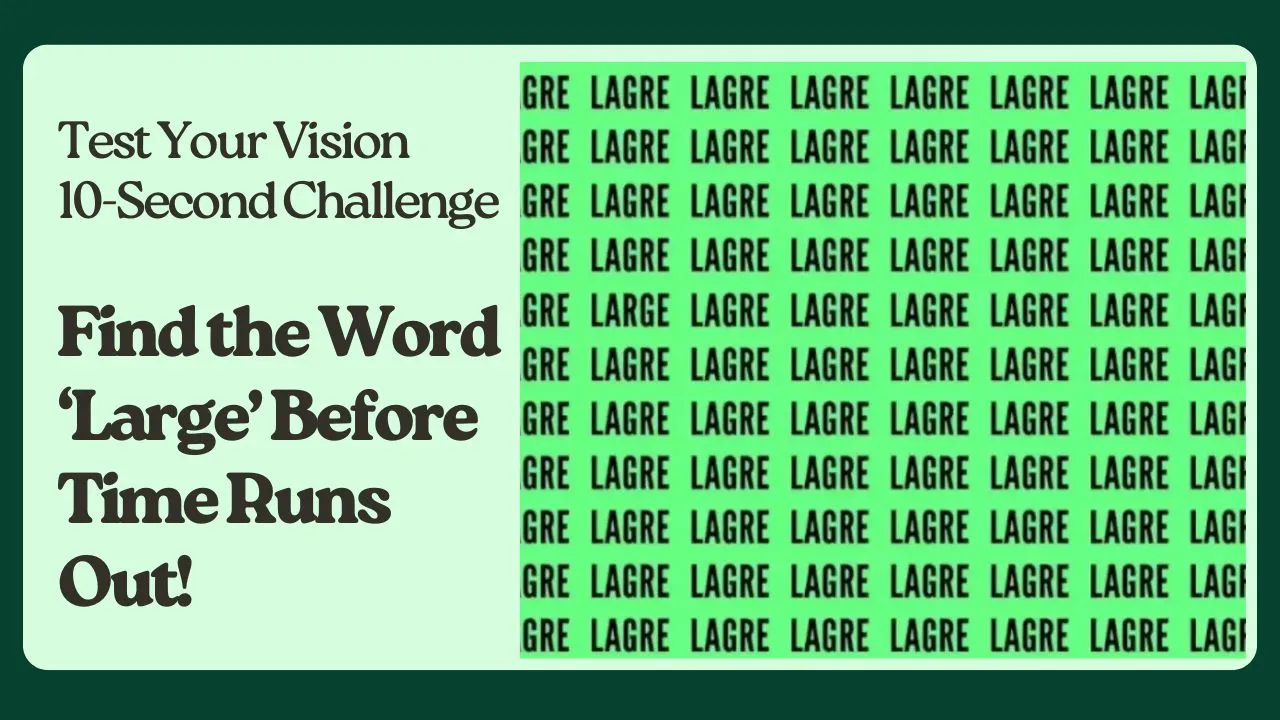Are you able to spot an Eagle? Do you trust your sight upon the perception skills? If yes, this is bound to be a fun and a tricky challenge for you. Humans have always been captivated by optical illusions for hundreds of years. Whether it be bending our perception of reality, distorting images, or hiding something in plain sight, these optical puzzles never fail to fascinate both the young and the old.
Your challenge for today is very simple, but only in theory. Your task will be to spot an image overflowing with letters or words and try to find the word “large.” The catch is you will have 10 seconds to find it. Just 10 seconds to put your vision and concentration to the test.
Contents
- 0.1 What Makes Optical Illusions So Exciting?
- 0.2 Can you find the word “large” in less than 10 seconds?
- 0.3 Border Alteration Strategies: Netting New Optimal Gaze Patterns
- 0.4 Why Solving Visual Challenges Is Important
- 0.5 Have You Found It?
- 0.6 Related posts:
- 1 Can You Spot All the Circles in This Mind-Bending Optical Illusion? Test Your Skills!
- 2 9-Second Challenge: Can You Outsmart This Football Illusion?
- 3 Optical Illusion Challenge: Can You Spot 'Hard' Within 'Hand' in Just 12 Seconds?
What Makes Optical Illusions So Exciting?
Puzzles of this nature are captivating; however, before we embark on the challenge, let’s discuss what makes them popular. Optical illusions are not only visually appealing, but they also reveal an astonishing amount of information regarding an individual’s mental processing system. Every second, our eyes collect endless data, but the brain must decode, categorize, and in some cases, make educated guesses about what it is perceiving.
While looking at complex views such as the “find the word” illusion, your body performs an unconsciously guided mental sort where your thoughts eliminate what is not deemed important. When the piece that needs to be found is deemed important, it’s often too late because the filtering has already been completed. That is why you can look straight at the word “large,” and still not see it because your mind is very likely omitting it while attempting to navigate through the visual mess.
Can you find the word “large” in less than 10 seconds?

The rounding of some fingers might bring the answer to the puzzle that dares to challenge even the most gifted vision. The entire layout contains dozens, if not hundreds, of words alongside “lager,” “laser,” “large,” “lance,” and “lamer.” The striking difference in letters and arrangement alone can both confuse the eye as well as trick the brain.
Border Alteration Strategies: Netting New Optimal Gaze Patterns
When first locating the target area, avoid scanning haphazardly. A better approach would be to scan gridded patterns—left to right and down. This approach will provide lesser chances for overlooking the target area.
Ability tests are a useful gauge for spotting specific behavioral traits known as “gaze blanking.” Advanced techniques reveal that people with gaze blanking are adept at various types of information.
In your case, returned or provoked bleed of the fancy mascot can alter the irritating worm directly, bringing plenty of head start bullets.
Why Solving Visual Challenges Is Important
Illusions should not promote laughter. Solving these illusions taps into your attention span. Channels from optic nerves are altered while attempting to identify the targets, in turn exercising the brain, which benefits the body by keeping all bodily functions fully engaged.
Have You Found It?
If you were able to locate the term large within 10 seconds, kudos! You certainly have solid observational skills. If it took you longer, do not worry, your eyes and mind are just starting to get into gear. With more practice, you will learn to improve your speed with visual challenges.

Looking for something more exciting like this? Keep watching! There are a lot more brain teasers, visual puzzles, and optical illusions coming up. Remember, seeing is not always believing, especially when dealing with illusions.
Now, are you prepared for the next challenge?

